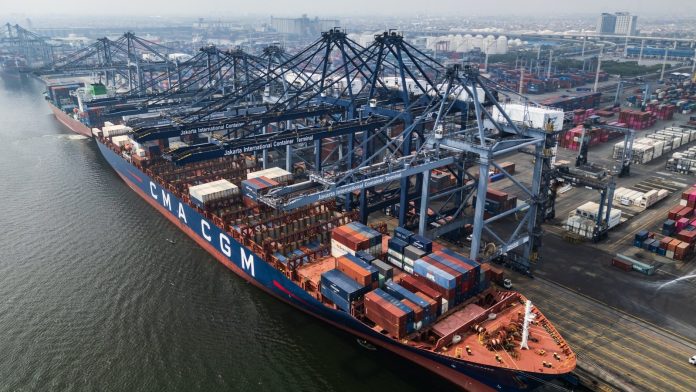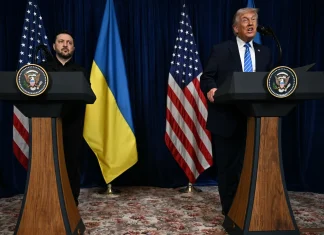
The Dawn of a New Trade Era: Inside the Impact of America’s Highest Tariffs in a Century
At the stroke of midnight, a seismic shift rippled through the global trading landscape. As the clock struck 12:01 am EDT recently, the United States Customs and Border Protection agency began collecting sharply increased tariffs on imports from dozens of countries. This moment marks the beginning of what critics have dubbed a trade experiment with no clear endgame — one where the average import duty has surged to its highest level in 100 years.
To step into this story is to witness a high-stakes drama where governments and global businesses scramble beneath a storm of escalating tariffs, determined to find footing amid the shifting sands of international trade.
A Global Market in Flux: The Stakes and the Players
For trading partners like Switzerland, Brazil, and India, the imposition of tariffs ranging from 10% to a staggering 50% has sent waves of uncertainty through corridors of power, boardrooms, and bustling marketplaces alike. The tariffs, which came after weeks of fraught negotiations and a frenzy of diplomatic efforts to soften the blow, unapologetically raise the cost of goods entering the United States.
Brazilian President Luiz Inacio Lula da Silva summed up his country’s response plainly: “We will not bow or humiliate ourselves by chasing a call with President Trump. But our talks continue because Brazil will fight for its rightful place.” Similarly, Indian Prime Minister Narendra Modi stood resolute, emphasizing, “The interests of Indian farmers and businesses are paramount. We will not compromise under pressure.”
These two giants represent a larger global narrative where emerging markets and established economies alike are caught in a complex dance, balancing the harsh realities of America’s trade policies with their own national interests.
What About the European Union and Others?
Not all players are facing the tariff onslaught equally. The European Union, Japan, and South Korea, together responsible for nearly 40% of US trade flows, managed to negotiate framework deals. These agreements rolled back the potential highest duties to a somewhat more manageable 15%, underscoring the uneven landscape that these new tariffs have created.
“From an economic perspective, this realigns supply chains in subtle but significant ways,” says William Reinsch, a senior fellow at the Center for Strategic and International Studies. “Prices will tick upward, but it is a slow burn—not an immediate explosion.”
For countries like Canada and India, the tariff fire is hotter, driving continued diplomatic and economic maneuvers. Canada, for instance, faces a daunting 35% tariff, a blow certain to ripple through goods from steel to machinery and beyond.
The Human and Economic Costs: More Than Numbers on a Chart
Consider Srinagar’s vibrant markets in Indian-administered Kashmir, where the mix of traditional crafts and imported goods reflects an economy deeply intertwined with global trade. Here, the ripple effects are personal. Shop owners worry about higher costs and diminished foot traffic. Farmers, reliant on exporters, face uncertainties that extend far beyond their fields.
On the corporate stage, the tariffs have already shaken industry titans. Toyota, the Japanese automaker, revealed a $10 billion blow to their bottom line, leading to a 16% cut in profit forecasts for the year. This is far from an isolated case; firms like Caterpillar, Marriott, Molson Coors, and Yum Brands are grappling with rising costs that threaten to stall growth and disrupt supply chains.
With tariffs driving American import taxes from a modest 2.5% in January to nearly 20% today, the scale of this transformation is staggering. U.S. Treasury Secretary Scott Bessent bestowed a silver lining: tariff revenue could swell above $300 billion annually. But at what cost?
Price Hikes and the Squeeze on American Consumers
Research from the Commerce Department reveals that signs of inflation are already bubbling up. Prices for household goods, motors, and recreation equipment have all inched higher, a direct consequence of these duties. The question arises: who ultimately pays the price for these tariffs? It is businesses on the frontline who absorb these costs first, but inevitably, the consumer’s wallet takes the hit.
Walking down a supermarket aisle in New York or Mumbai, one might wonder: will the jar of coffee, the latest electronics, or even everyday apparel become noticeably more expensive? The answer is increasingly likely, as importers reprice goods to offset new tariffs.
Political Theatre and Economic Chess
President Trump, who has tagged this initiative “Liberation Day tariffs,” framed them as a counterpunch to decades of perceived American disadvantage. His appeals to national pride resonate with many in the U.S. — “Billions of dollars, largely from countries that have taken advantage of the United States for years, will flow back home,” he proclaimed on Truth Social.
But beneath the bravado lies a delicate balance.
- The tariffs aim to shrink the U.S. trade deficit.
- They seek to protect domestic industries from foreign competition.
- They intend to prompt geopolitical leverage, especially around issues like Russian oil purchases.
Yet each initiative carries risks: retaliatory tariffs, supply chain breakdowns, and inflationary pressures that can ripple through the global economy. South Africa’s last-minute attempt to soften tariffs also fell through, despite President Cyril Ramaphosa’s personal involvement and ongoing talks.
And what of China, the most prominent U.S. trading adversary? It is on a separate tariff track, with the shadow of further duties looming come August if no diplomatic extension is reached — a scenario closely watched by markets worldwide.
The Broader Canvas: What Does This Mean for Global Trade?
These tariff battles are more than just negotiations over numbers. They are emblematic of a global economic phase marked by rising nationalism, fractured alliances, and the recalibration of supply chains made brittle by past shocks like the COVID-19 pandemic.
For small businesses in Vietnam, Indonesia, Pakistan, and the Philippines, limiting duties to around 20% has spared some hardship but still poses challenges. For larger economies, the verdict is less forgiving.
This raises an essential question for all of us who rely on the seemingly seamless flow of goods across borders daily: how do we reconcile the desire to protect domestic jobs and industries with the undeniable benefits of globalization?
And what about the human stories often lost in the policy wrangling? Consider Maria, a textile worker in São Paulo, Brazil, who fears that higher export tariffs could reduce orders, jeopardizing her livelihood. Or Rahul, a small shopkeeper in Mumbai reliant on affordable consumer electronics from abroad. Their lives are directly tethered to these high-level decisions.
Looking Ahead: The Road Unfolds
It is uncertain how long these tariffs will remain in place or if further escalations await. Yet what is clear is this: global trade, once seen as a driver of cooperation and interdependence, now feels like a battlefield where economic strategy intertwines with national pride and geopolitical maneuvering.
As tariff collections continue to swell and supply chains realign, consumers around the world will face changes in prices and product availability. Governments will negotiate, recalibrate, and possibly retaliate in kind. Industries will innovate or falter.
And we, the global citizenry, are left to ask ourselves: In this interconnected world, how do we navigate the crossroads where commerce meets politics, and ambition meets reality?
The answers, as always, will be shaped in the coming months, as new trade tariffs trade not just goods, but the futures of nations and individuals alike.









